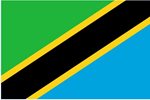Jared Alswang
 Jared is a medical student at Harvard Medical School in Boston, MA. He grew up in the Denver area before attending the University of Southern California, where he majored in Health Promotion and Disease Prevention Studies and minored in Spanish and Natural Science. As an undergraduate student, Jared co-founded an organization called Project Malawi to assist in locally driven health initiatives in Malawi. Throughout medical school, he has continued this work in addition to working closely with the organization Road2IR on interventional radiology research in the East African Region. He intends to pursue a career in interventional radiology with a focus in global health. In his free time, Jared enjoys playing soccer and tennis, traveling and finding the nearest dog to pet.
Jared is a medical student at Harvard Medical School in Boston, MA. He grew up in the Denver area before attending the University of Southern California, where he majored in Health Promotion and Disease Prevention Studies and minored in Spanish and Natural Science. As an undergraduate student, Jared co-founded an organization called Project Malawi to assist in locally driven health initiatives in Malawi. Throughout medical school, he has continued this work in addition to working closely with the organization Road2IR on interventional radiology research in the East African Region. He intends to pursue a career in interventional radiology with a focus in global health. In his free time, Jared enjoys playing soccer and tennis, traveling and finding the nearest dog to pet.

Schistosomiasis and the General Role of IR in Tropical Medicine
Muhimbili National Hospital, Dar es Salaam
Tanzania
What does the Kean Fellowship mean to you?
I am both humbled and honored to be a recipient of the Benjamin H. Kean Travel Fellowship. This fellowship gives me the exciting opportunity to travel to Dar Es Salaam, Tanzania, for an academic year to conduct research in the interesting space of global interventional radiology. The Kean Fellowship empowers medical students to follow their passions in underrepresented areas of medicine. Without the help of ASTMH, projects like the one that I am pursuing this year would not be possible and I am forever grateful for the opportunity.
What do you anticipate learning?
During my time in Tanzania, I will be working with pioneers of interventional radiology in East Africa. Less than five years ago, there was not a single interventional radiologist in Tanzania and no formal training programs within the entire region of sub-Saharan Africa. It is an incredibly tall task to build a specialty within a new region, especially when there are limited roadmaps within the field on how to do so. It is something that I imagine takes tremendous bravery and ambition, something I hope to observe and learn from the Tanzanians leading the charge in this effort. To me, it would be an honor to play whatever small role I can assisting in research aimed at identifying and exploring the role of interventional radiology within Tanzania, as well as the field of tropical medicine at large. I cannot wait to learn all I can from my mentors in Tanzania about the different research and capacity building skills needed for such an endeavor.
What interests you about tropical medicine and what problems are you interested in solving?
On the surface level, one may not associate tropical medicine with interventional radiology. Given the specialty’s reliance on cutting-edge technology and the historical lack of local expertise in the area, IR’s role in tropical medicine has been ill-defined. Yet, with the growth of interventional radiology in sub-Saharan Africa, comes the potential to manage several disease areas and their complications in a new and long-term cost-effective way. Ranging from preventing variceal bleeds with transjugular intrahepatic portosystemic shunts for schistosomiasis patients to draining abscesses for infections that would have previously required surgery, I believe improved access to interventional radiology has a role to play in reducing the burden of diseases of poverty. My experiences working in the global health setting over the last few years has instilled a passion in addressing diseases of poverty, as well as exploring the field from a research angle. In my opinion, interventional radiology is a really unique angle from which to approach this interest.